Quantum Gravity and Black Holes
Video Briefs
One of the most striking predictions of the general theory of relativity is the formation of…
Black hole and cosmological horizons -- from which nothing can escape according to…
Related News
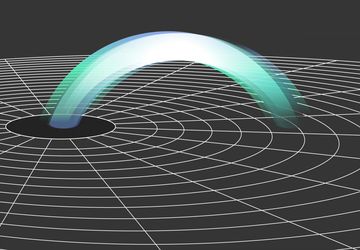
Lucy Reading-Ikkanda/Quanta Magazine
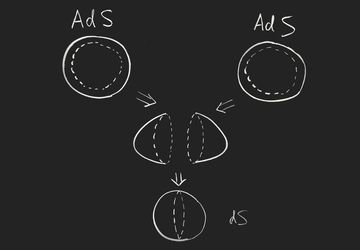
A sketch by Xi Dong of the cutting, warping and gluing procedure that he and his colleagues used to construct a hologram of a de Sitter universe.
The fabric of space and time is widely believed by physicists to be emergent, stitched out of quantum threads according to an unknown…
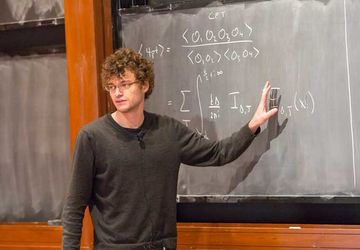
Douglas Stanford's work as a theoretical physicist at the Institute for Advanced Study in Princeton, N.J., has already revealed new…

Image credit: L.A. Cicero
Douglas Stanford has won the 2018 Breakthrough New Horizons Prize in Physics for work that uses chaos to better understand the links…
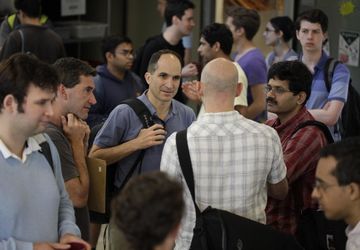
Researchers chat during a coffee break at the It From Qubit summer school
Photo: JB Park, Perimeter Institute
The first It From Qubit collaboration workshop and summer school was held at the Perimeter Institute in Waterloo, Canada in July, 2016…

If a pebble is thrown into a black hole, an observer outside the black hole will see waves of energy diffuse outwards along the event…
Related Events
ER = EPR is a shorthand that joins two ideas proposed by Einstein in 1935. One involved the paradox implied by what he called “spooky action at a distance” between quantum particles (the EPR paradox, named for its authors, Einstein, Boris…
ER = EPR is a shorthand that joins two ideas proposed by Einstein in 1935. One involved the paradox implied by what he called “spooky action at a distance” between quantum particles (the EPR paradox, named for its authors, Einstein, Boris…
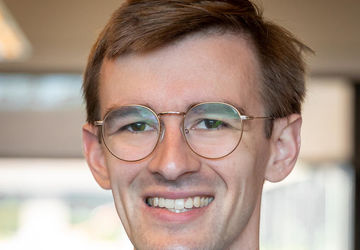
I will discuss the quantization of one of the simplest theories of gravity, three-dimensional Einstein gravity with negative cosmological constant. In particular I will describe a precise reformulation of AdS_3 quantum gravity in terms of a novel…

It has recently been shown that any Euclidean gravitational path integral satisfying a simple set of axioms defines type I von Neumann algebras of bulk observables acting on compact closed codimension-2 asymptotic boundaries. These axioms imply…

We investigate a new approach to holography in asymptotically AdS spacetimes, in which time rather than space is the emergent dimension. By making a sufficiently large T^2-deformation of a Euclidean CFT, we define a holographic theory that lives…
Brian Swingle of the Stanford Institute for Theoretical Physics discusses the latest research in Black Hole complexity and computational power at the 2015 SITP Templeton Conference.
One of the most striking predictions of the general theory of relativity is the formation of black hole and cosmic horizons sequestering different regions of spacetime. In this talk we will overview recent theoretical and observational…
Professor Eva Silverstein of the Stanford Institute for Theoretical Physics (SITP) discusses the physics of horizons, black holes, and string theory.
Black hole and cosmological horizons -- from which nothing can escape according to…
Black hole and cosmological horizons -- from which nothing can escape according to classical gravity -- play a crucial role in physics. They are central to our understanding of the origin of structure in the universe, but also lead to fascinating…